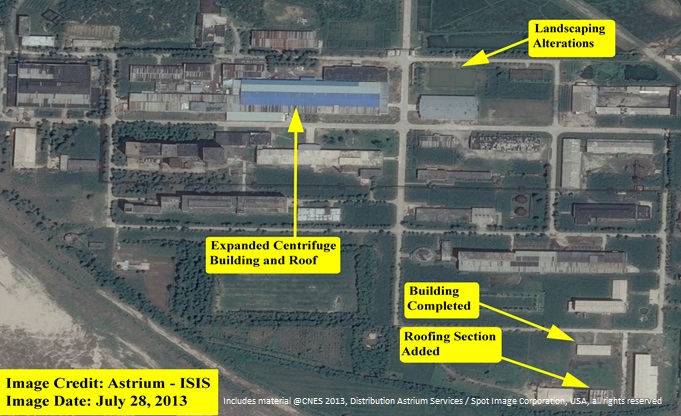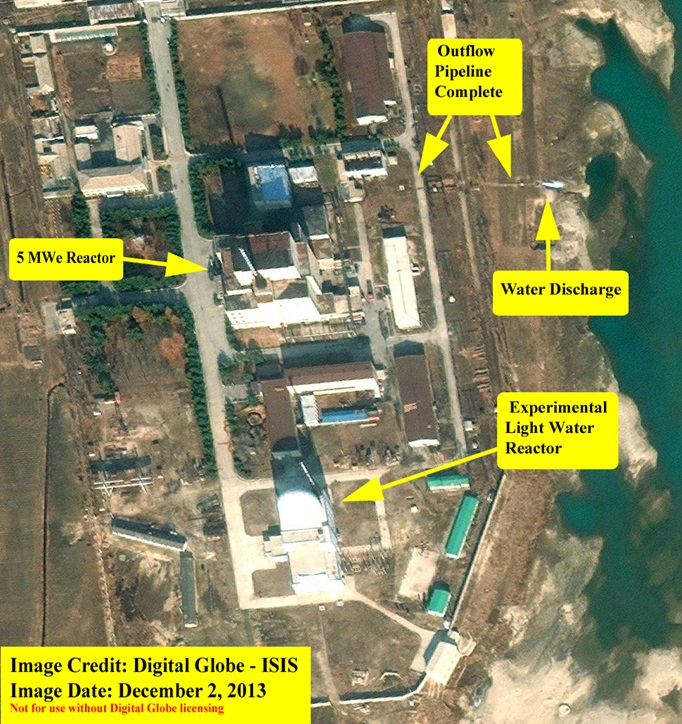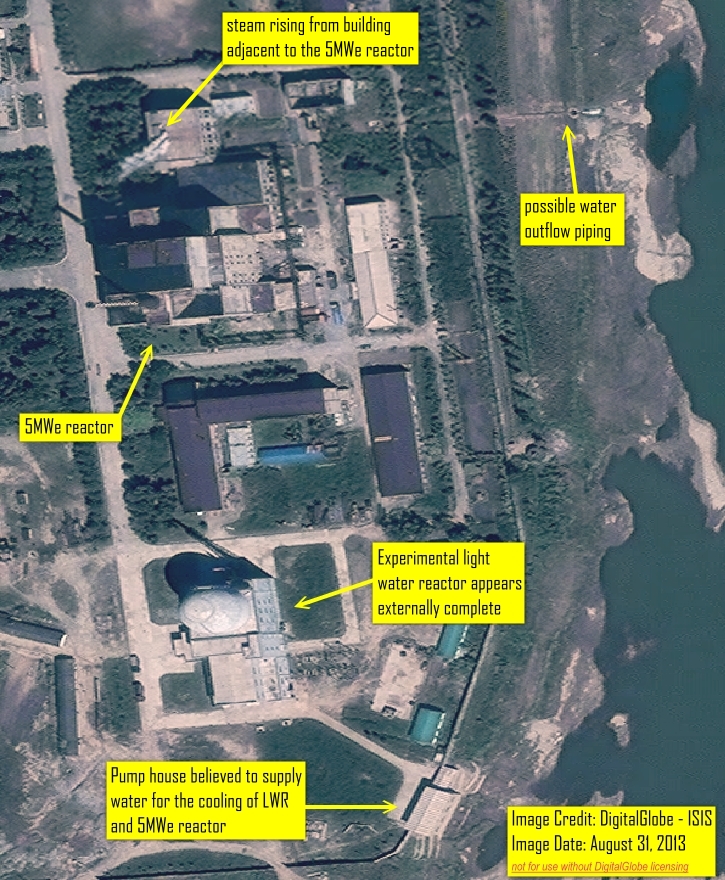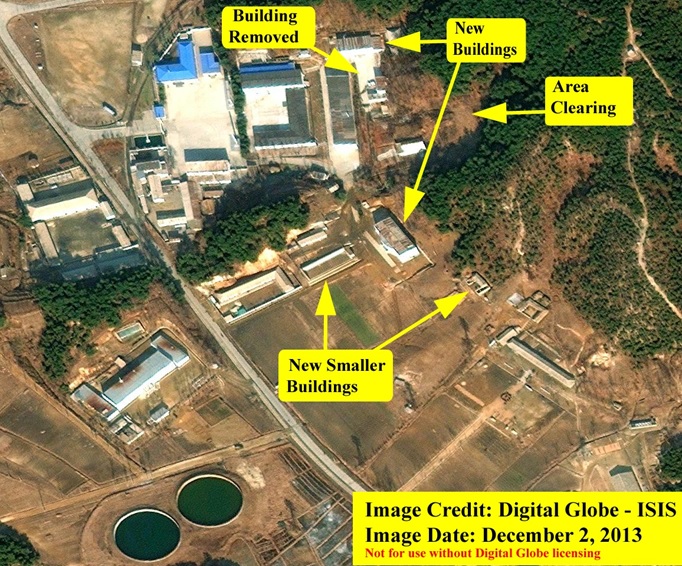Reports
Increased Activity at the Yongbyon Nuclear Site
by David Albright and Serena Kelleher-Vergantini
December 5, 2013
Recent commercial satellite imagery shows that North Korea’s Yongbyon nuclear center appears to be increasingly active. There are several signs of new and continued activity and progress in the construction of facilities:
Fuel Fabrication Complex
In a December 2, 2013 Digital Globe commercial satellite imagery, steam is present at the fuel fabrication complex (see figure 1). The steam is emerging from a building that years ago was involved in converting yellowcake to natural uranium dioxide. In other facilities in the complex, the uranium oxide was subsequently converted into metal and then made into fuel for the gas-graphite reactors, principally the 5 megawatt-electric (MWe) reactor. However, this building’s exact purpose today cannot be determined simply from satellite imagery.
One implication of the steam is that the building is operational as part of an effort to make fuel for the 5 MWe reactor. The reason for the steam can vary. Given North Korea’s cold temperatures, the steam could result from heating the building, or it could have been used in production processes, some of which require steam.
Centrifuge Plant
Since earlier this year, North Korea has been expanding its gas centrifuge enrichment plant at Yongbyon. This plant is believed to be producing low enriched uranium fuel for the light water reactor (LWR) or for further enrichment to weapon-grade at Yongbyon or elsewhere.
Since July 2013, North Korea has renovated an additional section of the old roof in the original building that appears to be part of the centrifuge plant (see figure 1).
Signs of Additional Construction Adjacent Centrifuge Plant
In the July 28, 2013 commercial satellite image, there were signs of construction or landscaping in an area adjacent to the centrifuge plant. A previously empty lot was cleared and converted in what seems to be a pool although it is not clear if this activity is functionally related to the expansion of the centrifuge plant building or to the fabrication of fuel (figure 1 and 2). In the December 2 image, the new area appears more finished but it still cannot conclusively be identified. However,
it looks like a pool, since it appears below grade, based on evaluating shadows in the image, and the pool appears to have some type of wall along its perimeter. The suspected pool’s function and that of the adjacent building is not known.
Five MWe Reactor and Light Water Reactor (LWR)
Water is being discharged near the 5 MWe reactor, according to the December 2, 2013 commercial satellite imagery (see figure 3). The outflow pipeline east of this reactor building has been successfully completed, according to analysis by 38North. A November 3, 2013 Astrium commercial satellite image shows water discharge as well, as does an August 31, 2013 Digital Globe image. Collectively, the various imagery suggests that the 5 MWe reactor has restarted and is operating.
This discharge point into the river serves the 5 MWe reactor. The most likely explanation of the water discharge is that this water is used as part of a secondary cooling system to cool the carbon dioxide gas from the 5 MWe reactor core and its presence signifies testing or on-going operation of the 5 MWe reactor. However, no steam is seen originating at this reactor, so this conclusion results from an assessment.
In a previous ISIS Imagery Brief, commercial satellite imagery dated August 31, 2013 showed two columns of steam rising from a building adjacent to the 5MWe graphite-moderated reactor (figure 4). This could have been connected to the testing or operation of the 5 MWe reactor. No such steam was seen in two images from November and December 2013.
The restart of the 5MWe reactor provides North Korea with the ability to expand its stock of weapons-grade plutonium. Because of the manner in which the reactor operates, North Korea will likely not discharge the core load of irradiated fuel for 2-3 years, delaying any use of the plutonium in nuclear weapons. At that time and depending on the performance of this aged reactor, the core load of irradiated fuel will contain roughly about ten kilograms of plutonium, which can be separated in the Radiochemical Laboratory.
No significant external changes were visible at the LWR. With the dome and roofs complete, significant reactor progress is occurring mostly inside the buildings and is not visible in imagery. Start-up in 2013 appears unlikely.
Other Sites
There has been continued construction work at a site located between north of the fuel fabrication complex and southwest of the Radiochemical Laboratory, or plutonium separation plant (see figure 5). Four buildings have been added at the site (two medium and two small buildings) and a building has been demolished. Additionally, in certain areas of the site trees have been removed as if in preparation for new construction and expansion.






 twitter
twitter